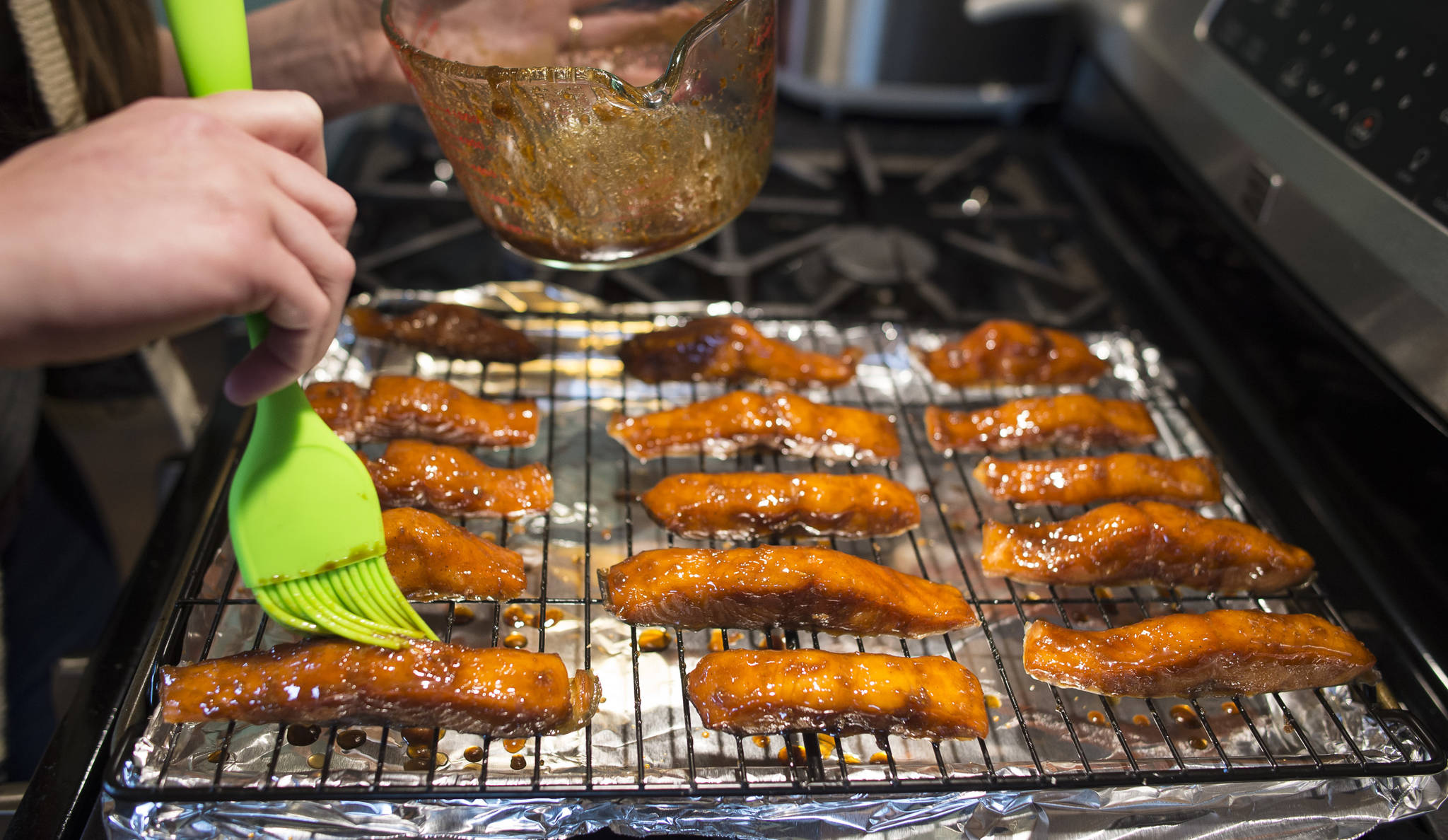Like most Alaskans, I’m a salmon fiend. I love everything about salmon: hooking them, fighting them, whacking them, filetting them, cooking them and most of all, eating them. I will eat salmon, of every kind, prepared in every which way, for practically every meal.
And we all know that there’s a hierarchy to the various kinds of salmon that Alaskans are lucky enough to have access to. I’m ready to fight anyone who claims that king salmon is anything other than the most perfect food on the planet.
But I have to say, I think we Alaskans tend to give a couple of our salmon friends short shrift. Yes, I’m talking about pinks and chums. Why on earth would any Alaskan choose pink or chum salmon over sockeye or coho, let alone king? Friends, I’m here to tell you, a beautiful fresh chrome wild Alaskan salmon, of any kind, is a delicious gift. Not to mention, chum, or sometimes called keta, is also vastly more affordable when you’re shopping.
If you don’t count delivering papers for this fine publication, my first job was selling smoked salmon to tourists. I was a full-on salmon snob at 14, only sockeye or king for me, thank you very much. But then one of the smokehouse guys brought in his homemade batch of salmon candy. It was one of the most delicious things I’ve ever put in my mouth, and imagine my shock when he told us it was made with chum.
So when I picked up a couple of beautiful pressure-bled chrome chum from Taku River Reds, I knew exactly what I wanted to do. Second only in size to king salmon, we often think of chum salmon in their spawned-out form, full-on alligator chompers and nasty tiger stripes. But right now, when they’re bright and beautiful, these fish are good eats. Chum are significantly less oily than king, sockeye and coho, and have a much more delicate and overall less salmony flavor. Which means that chum take on seasoning like a champ.
I don’t own a smoker, and sometimes don’t want to go through the rigamarole of borrowing one, so what follows is essentially a smokeless smoked salmon candy that can be made in any kitchen with an oven. You can use any kind of salmon or trout in this recipe, but I think it’s an especially good way to use those unsung, more mild salmon. If you do own a smoker, you can use this same recipe and instead of kippering the salmon in the oven, do so in your smoker the same way you would any hot-smoked salmon.
Candied Salmon — Without a Smoker
Prep: 2 hours active, 20 hours total
Makes: 5 pounds
• 5 pounds salmon fillets – Or about one large chum
• Dry Salt Cure
• 1 pound kosher salt
• 1 pound light brown sugar
• 1 tbsp allspice
• 1 tbsp ginger
Glaze
• 1/2 cup packed light brown sugar
• 2 tbsp soy sauce
• 1 tbsp grated fresh ginger
• 1 tbsp dijon mustard
• Cracked fresh black pepper
Cure your salmon before you head to bed and leave it out to dry overnight. Then let the salmon kipper or smoke while you putz around your house the next day. Going from raw salmon to candied salmon will take about 20 hours, but your actual active work time will be closer to two hours.
Curing
Pull out the pinbones from your salmon and cut into one-inch strips. Mix together ingredients for the dry salt cure in a bowl and set aside. Spread enough salt cure over the bottom of a non-reactive bowl or dish (i.e. not aluminum, cast iron, or copper) so that there’s a solid layer of the cure. Place salmon strips skin side down on the first layer of cure with space between each piece, once your first layer is complete, sprinkle cure over the salmon so that all the exposed flesh is covered. Lay out next layer, sprinkle to cover, and repeat until all your salmon is buried in the sugar and salt mixture. Cure in fridge for one hour.
Drying
Set out drying/cooling racks in a breezy spot or set up in a cool place with a fan to blow over the fish. Remove fish from the brine, quickly rinse off with cold water, then pat dry with paper towels. Place the salmon strips skin side down on the cooling racks so that the pieces aren’t touching each other. Drying the salmon like this forms a shiny layer on the surface of the meat, also known as a pellicle, it’s the key to delicious cured or smoked salmon and takes a couple of hours. It’s much easier to let this magic happen while you sleep so you aren’t tempted to constantly poke your salmon to see if its ready (if you’re impatient like me).
Glazing/Kippering
Mix together your glaze. Line two baking sheets with aluminum foil and place the racks of salmon on top of them. Using a basting brush, coat each piece of salmon with the glaze. Place in the oven and bring your oven up to whatever the lowest baking setting is, mine was 170 degrees. After an hour, pull the salmon back out and coat again with the glaze. Do this every hour until you run out of glaze — probably three or four times. Continue to cook salmon in the oven until tacky to the touch, about 7 or 8 hours. Pull out and let cool at room temperature and then eat! You can store in a airtight container in your fridge for a week or two, or vacuum seal and freeze. For freezing it’s easiest to freeze on the racks and then vacuum seal.
• Erin Anais Heist is a food blogger in Juneau. Readers can contact her at foodabe.com, or on Instagram or Twitter at @erinanais. “Eating Wild” recipes publish every other week.

